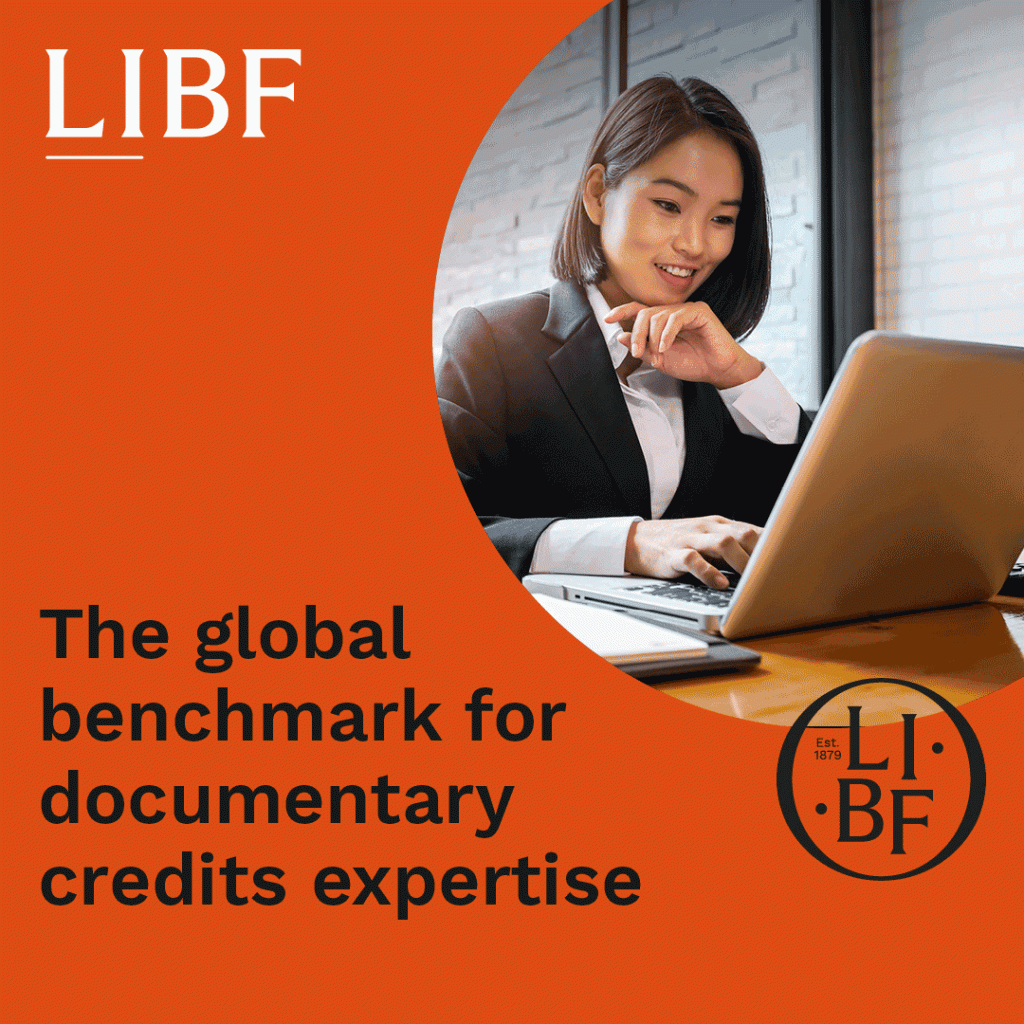Types of Credit

Access trade, receivables and supply chain finance
We assist companies to access trade and receivables finance through our relationships with 270+ banks, funds and alternative finance houses.
Get Started
ADVERTISEMENT
Contents
Types of Credit
There are several types of documentary credits, each with its own characteristics.
Sight Credits
With sight credits, the nominated bank (acting on its nomination), the confirming bank, or the issuing bank effects payment upon presentation of the documents (also called “at sight”), provided documents comply with the terms and conditions of the documentary credit.
Usance Credits
Under usance credits, the issuing bank undertakes to honour a compliant presentation at a future date (known as the “maturity date”). There are two types of usance credits:
- Acceptance credits: A documentary credit stipulating the presentation of a bill of exchange (“draft”) which the bank will accept and pay at maturity to the beneficiary.
- Deferred payment credits: Same as acceptance credits, except that they do not require the presentation of a draft.
Mixed Payment Credits
Practitioners use mixed payment credits when a partial amount is payable at sight while the remainder is payable at a future date (or dates) as per the documentary credit terms.
Since these credits comprise a mix of sight and usance credits, they are known as mixed payment credits.
Negotiation Credits
A negotiation credit is the purchase by the nominated bank of drafts (drawn on a bank other than the nominated bank) and/or documents under a complying presentation, by advancing or agreeing to advance funds to the beneficiary on or before the banking day on which reimbursement is due to the nominated bank.
Confirmed Credits
Confirmed credits are those that also bear the confirming bank’s irrevocable undertaking (in addition to that of the issuing bank) to honour or negotiate, without recourse, documents complying with the terms and conditions of the credit.
Transferable credits
If the beneficiary (i.e., the “first beneficiary”) of a documentary credit is an intermediary trader that procures the goods from another source, they may request the buyer to provide a transferable credit, which the first beneficiary can then transfer to its supplier (i.e., the “second beneficiary”). A transferable documentary credit must expressly state that it is transferable and provide the name of the nominated bank or the bank authorised to transfer.
To transfer the credit, the first beneficiary will request that the nominated or authorised bank transfer the documentary credit to the second beneficiary in whole or in part. The first beneficiary can request transfer to multiple second beneficiaries, provided the documentary credit allows for partial shipments. However, the second beneficiary cannot transfer the documentary credit to another subsequent beneficiary.
Under UCP 600, the transfer must be effected on the existing terms and conditions except for the amount, the unit price if given, the expiry date, and the latest date of shipment or period for presentation, all of which can be reduced. Furthermore, the name of the first beneficiary can be substituted with the applicant’s. If the documentary credit requires the presentation of an insurance document, the amount or the percentage of insurance can be increased to provide cover as initially required under the documentary credit.
The first beneficiary has the right to provide its invoice in substitution of the second beneficiary’s invoice and draw for the difference in amount, if any. However, if it fails to provide its invoice, the transferring bank can forward documents received from the second beneficiary to the issuing bank.
Back-to-back Credits
Back-to-back documentary credits serve the same purpose as transferable credits. However, instead of transferring the original documentary credit to its supplier, the beneficiary requests that its bank issue a new one in favour of its supplier. Practitioners call these back-to-back credits, as banks issue them on the back of an original documentary credit.
A back-to-back credit is separate and independent from the original documentary credit. While the issuing bank of the back-to-back documentary credit must honour a complying presentation received under its documentary credit, the payment under the original is contingent on the ability of the beneficiary of the original documentary credit to provide documents in compliance with the terms and conditions.
Instalment Credits
Instalment credits stipulate a shipment schedule with specific quantities or dates by which the goods will be shipped.
A unique feature of these credits is that if one instalment is not shipped within the stipulated period, the entire credit is no longer available for any subsequent instalments (not just for that specific instalment).
Revolving Credits
When buyers place repeat orders with the same sellers for the same goods at the same price and with the same terms and conditions, instead of issuing a new credit every time, they can agree with their suppliers to issue revolving credits.
These credits are ‘revolved’ – either automatically or through a notice of reinstatement from the issuing bank – under the terms and conditions of the existing drawing.
The parties can agree to stipulate the number of times, the maximum amount, or the latest date up to which a revolving credit will automatically be reinstated.
Advance Payment Credits
Typically, documentary credits provide payments to the beneficiary at the post-shipment stage upon presentation of documents complying with the terms and conditions. However, it is possible to provide advance payment to the beneficiary at the pre-shipment stage in anticipation of the beneficiary presenting documents after shipping the goods.
To accomplish this, the credit allows the beneficiary to draw for up to a specified amount by simply presenting a receipt. The amount of any advance payment must then be deducted from invoice amounts as goods are shipped.
Financiers can provide pre-shipment finance through two types of advance payment credits:
1. Red clause documentary credits: These credits contain a clause authorising the nominated bank to extend an advance payment to the beneficiary. The bank can release a set value at the pre-shipment stage to help the beneficiary procure the raw material, process, manufacture, pack, and export the goods. The advance payment is settled later by the submission of credit-compliant documents by the beneficiary covering the relevant shipment of goods.
Banks historically typed this clause in red ink when credits were issued in letter form.
2. Green clause documentary credits: These credits are similar to red clause documentary credits. However, in addition to extending advance payment to the beneficiary at the pre-shipment stage, green clause documentary credits also include additional coverage of pre-shipment warehousing and insurance costs.
Standby Letters of Credit
Standby letters of credit (SBLCs) are used for a variety of purposes, such as to support an applicant’s performance obligations (performance standby), to support an applicant’s bid in a tender (bid-bond standby), to guarantee an applicant’s financial obligations to the beneficiary, which can also be a bank (financial standby), or to guarantee the performance of a commercial contract (advance payment guarantee).
Practitioners also use SBLCs to support open account transactions where a seller ships the goods directly to the buyer, and the buyer is expected to make the payment directly to the seller. If the buyer fails to pay when due, the beneficiary can draw on the SBLC.
Generally, standby credits are not expected to be drawn on, hence the name. SBLCs are akin to guarantees since, in the case of the applicant’s default or non-fulfilment of its contractual obligations, the beneficiary of an SBLC can draw under the SBLC by claiming on the issuing bank or the confirming bank as per the terms and conditions of the SBLC.
Typically, the beneficiary’s claim must be supported by documents such as its statement confirming the applicant’s default, copies of unpaid invoices, or copies of transport documents as required in the SBLC.
Although many documentary credits are often issued subject to UCP 600, UCP 600 has limited applicability to SBLCs as not all articles of UCP 600 apply to SBLCs. The International Standby Practices of 1998 (“ISP98”) (ICC publication no 590) provides a separate and exclusive set of rules governing SBLCs issued subject to ISP98.
Our trade finance partners
- Letters of Credit / Documentary Credit Resources
- All Letters of Credit Topics
- Podcasts
- Videos
- Conferences




















